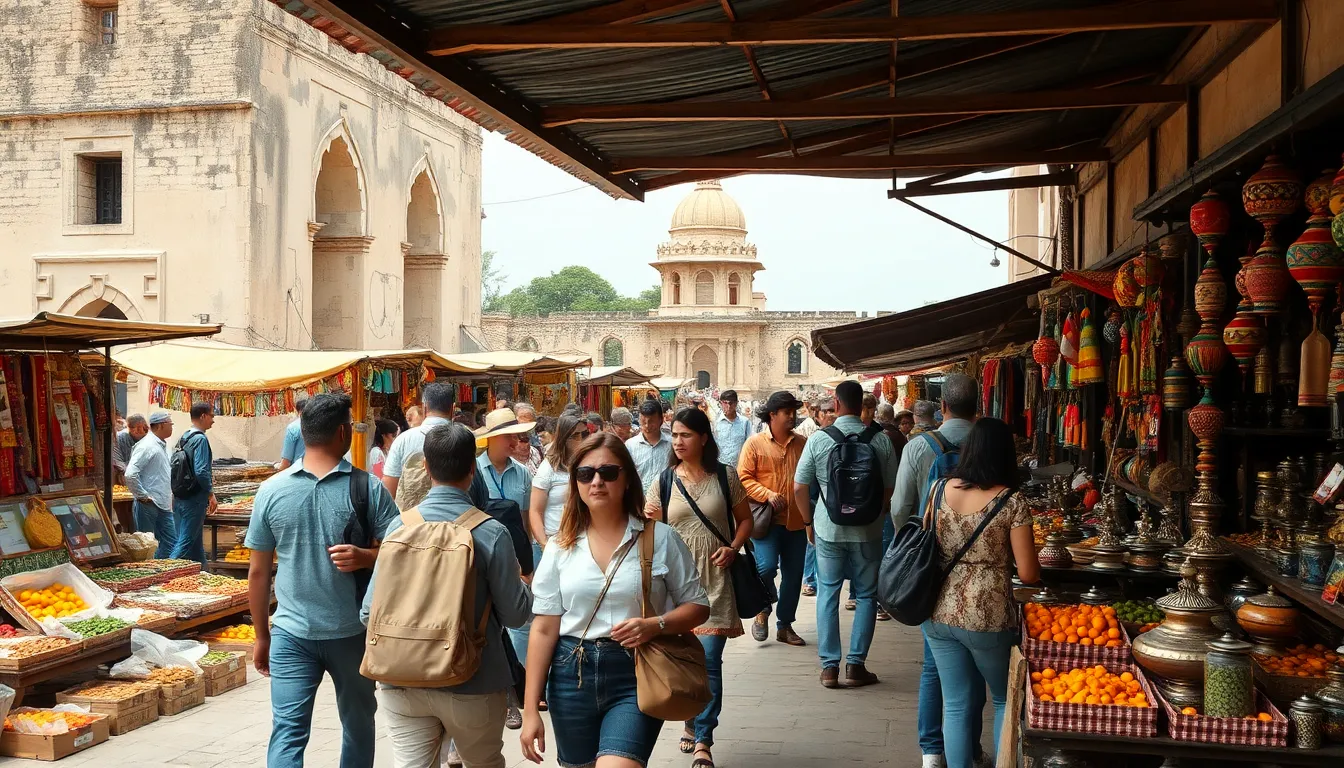Imagine wandering down a path where history whispers secrets from centuries past. Historic travel routes offer more than just a way to get from point A to point B; they’re a journey through time, filled with tales of adventure, intrigue, and maybe even a little mischief. From the Silk Road’s bustling trade to the Oregon Trail’s rugged charm, these routes invite travelers to step into the shoes of explorers and pioneers.
Table of Contents
ToggleOverview of Historic Travel Routes
Historic travel routes encompass pathways that shaped societies and cultures throughout history. These routes facilitated trade, migration, and cultural exchange. A famous example is the Silk Road, which connected East and West, enabling the flow of goods and ideas between continents.
Travelers on such routes encounter diverse landscapes, from rugged mountains to vast deserts. The Oregon Trail offers a glimpse into the American frontier, allowing exploration of the challenges faced by pioneers during the westward expansion.
Exploring historic travel routes often involves visiting landmarks that tell stories of the past. Bone churches in Europe and ancient caravanserais along the Silk Road illustrate rich cultural heritages. Many routes also connect to festivals or events that celebrate their historical significance.
In addition to inspiring awe, these paths provide valuable lessons about resilience and innovation. Scholars continue to study these roads, uncovering details of the people who traversed them. Each journey along a historic route carries intrinsic value, whether it involves visiting historical sites or retracing the steps of legendary explorers.
Culinary experiences await on these routes, offering unique tastes and flavors rooted in local traditions. While traversing these paths, travelers may indulge in regional dishes that reflect centuries of cultural intermingling. Markets along the historic routes often buzz with activity, showcasing artisans and their crafts.
Understanding the significance of these travel routes enriches the travel experience, leaving lasting impressions on those who venture alongside history.
Significance of Historic Travel Routes

Historic travel routes play a crucial role in connecting people with their cultural and historical legacies. They offer insights into the past while enriching travel experiences.
Cultural Heritage
Cultural heritage reflects the traditions, customs, and stories tied to historic travel routes. Travelers find diverse cultures along paths like the Silk Road, where art, architecture, and philosophies merged over centuries. Each stop along these routes reveals unique festivals, cuisine, and local craftsmanship that define community identity. People experience vibrant markets and ancient landmarks that narrate the history of exploration and trade. Engaging with local traditions allows for a deeper understanding of the cultural influences etched into the very fabric of society.
Economic Impact
Economic impact remains significant along historic travel routes. Routes attract tourism, benefiting local economies and generating jobs. Increased visitor traffic supports businesses such as hotels, restaurants, and shops, fostering community prosperity. Regions connected by these routes experience enhanced investments as infrastructure develops to accommodate travelers. Historic routes also promote the sale of artisanal crafts and local products, boosting regional markets. Overall, tourism not only preserves historic pathways but also empowers local economies through sustainable practices.
Notable Historic Travel Routes
Historic travel routes connect past and present, serving as veins through which culture and history flow. Some of the most notable routes include the Silk Road, the Oregon Trail, and the Inca Trail.
The Silk Road
The Silk Road spanned over 4,000 miles, linking Asia and Europe. Merchants traversed this route, exchanging silk, spices, and ideas across diverse landscapes. Various cities along the Silk Road, like Samarkand and Bukhara, boast architectural marvels and vibrant bazaars. Travelers find ancient caravanserais that provided rest and hospitality during long journeys. Cultural exchanges along the route enriched local traditions, bringing about unique art forms and culinary delights. Festivals celebrating this rich heritage can still be experienced today.
The Oregon Trail
The Oregon Trail stretched approximately 2,170 miles, guiding pioneers toward the American West. This historic pathway transformed countless lives as settlers sought new opportunities in the 1840s to 1860s. Significant landmarks, such as Chimney Rock and Fort Kearny, punctuate the trail, serving as navigational aids for weary travelers. Historical reenactments allow modern visitors to immerse themselves in pioneer life. Today, the trail’s legacy lives on through educational programs and preserved park sites that honor its place in American history.
The Inca Trail
The Inca Trail extends about 26 miles through stunning Andean landscapes, leading trekkers straight to Machu Picchu. As a sacred pathway, it offers glimpses into Inca civilization, showcasing ancient ruins and agricultural terraces along its route. Diverse ecosystems enrich the trek, presenting opportunities to encounter rare flora and fauna. Trekkers can also appreciate the breathtaking views of the Andes, enhancing the experience. Each year, thousands undertake this journey, celebrating the Inca heritage and the incredible engineering feats of the ancient world.
Modern Implications of Historic Travel Routes
Historic travel routes play a vital role in contemporary society, influencing tourism and preservation efforts. Their impact on culture, economy, and community identity remains profound.
Tourism Opportunities
Tourism opportunities flourish along historic travel routes. Travelers seek unique experiences tied to history, arts, and local traditions. Popularity of routes like the Silk Road highlights this trend. Visitors engage with local artisans, purchasing handcrafted goods that reflect cultural identity. Festivals celebrate traditions, drawing attention to culinary and artistic heritage. Enhanced marketing efforts attract more tourists, benefiting local economies directly. Increased visitation fosters investment in infrastructure, leading to better services for travelers. Communities experience economic revitalization as jobs emerge in hospitality and retail sectors.
Preservation Efforts
Preservation efforts are critical for maintaining the integrity of historic routes. Organizations advocate for conservation of these pathways, ensuring cultural heritage endures. Local governments often collaborate with non-profits to secure funding for restoration projects. Educational initiatives raise awareness about the importance of preserving history. Environmental sustainability also factors into these efforts, balancing tourism and conservation. Protection measures safeguard not just the routes but the landscapes surrounding them. Such actions benefit future generations who will explore these historical treasures. Communities take pride in their heritage, empowering locals to engage in preservation efforts actively.
Historic travel routes are more than mere paths; they are gateways to the past. They invite travelers to immerse themselves in rich cultural tapestries and historical narratives. By exploring these routes, individuals not only witness breathtaking landscapes but also connect with the stories that shaped civilizations.
The economic and cultural benefits these routes provide are invaluable, fostering community growth and preserving heritage. As travelers seek authentic experiences, the importance of sustainable tourism and conservation becomes clear. Protecting these historic pathways ensures that future generations can also embark on their own journeys through time, discovering the legacies left behind by those who traveled before them.


